
Burnham Thorpe is a village and civil parish in the English county of Norfolk. It is famous for being the birthplace of Vice Admiral Horatio Nelson, victor at the Battle of Trafalgar and one of Britain's greatest heroes. At the time of his birth, Nelson's father, Edmund Nelson, was rector of the church in Burnham Thorpe.

Rushcliffe is a constituency in Nottinghamshire represented in the House of Commons of the UK Parliament from 2024 by James Naish, a Labour MP.

Normanton on Soar, formerly known as Normanton-upon-Soar and known locally as Normanton, is a village and civil parish in the Rushcliffe district of Nottinghamshire, England near the River Soar. This historic village is home to one of the last operating chain ferries in the country, the only lived in cruck building in Nottinghamshire and a 13th-century Grade I listed parish Church.

Kingston on Soar is a village and civil parish in the Rushcliffe borough of Nottinghamshire, England.

Stanford on Soar, known locally as Stanford, is a village and civil parish in the Rushcliffe district of Nottinghamshire, England near the River Soar.

West Leake is a small conservation village and civil parish in the Rushcliffe district of Nottinghamshire.

Alpheton is a village and civil parish in the Babergh district of Suffolk, England. Located on the A134 road about six miles north of Sudbury, in 2005 it had a population of 260, reducing to 256 at the 2011 Census. According to Eilert Ekwall the meaning of the village name is the homestead of Aelfled.

Rushcliffe was a wapentake of the historic county of Nottinghamshire, England. It was in the south of the county, on the south side of the River Trent, covering the parishes of Barton in Fabis, Bradmore, Bunny, Clifton with Glapton, Costock, East Leake, Edwalton, Gotham, Keyworth, Kingston on Soar, Normanton on Soar, Plumtree, Ratcliffe on Soar, Rempstone, Ruddington, Stanford on Soar, Stanton-on-the-Wolds, Sutton Bonington, Thorpe in the Glebe, Thrumpton, West Leake, Widmerpool, Wilford, Willoughby on the Wolds and Wysall.
Clipston, or Clipston on the Wolds, is an English hamlet and civil parish in the south Nottinghamshire district of Rushcliffe. It lies between Cotgrave and Normanton-on-the-Wolds and is approached by narrow roads that offer views of neighbouring countryside. It has an area of 916 acres and a population of 62 as reported in the 2021 census.
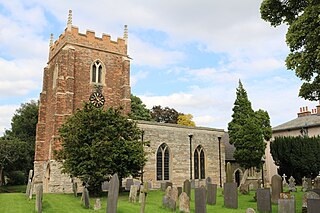
Hawksworth is an English conservation village and civil parish in the Rushcliffe borough of Nottinghamshire. It lies 10 miles (16 km) south of Newark-on-Trent, adjacent to the villages of Flintham, Sibthorpe, Thoroton, Scarrington and Screveton.
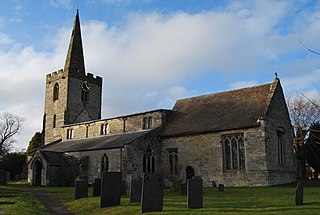
Wysall is a village and civil parish in Nottinghamshire, England. It is 11 miles (18 km) south of Nottingham. According to the 2001 census it had a population of 321, including Thorpe-on-the-Glebe and increasing to 431 at the 2011 census. Wysall singularly reported 367 residents at the 2021 census. Holy Trinity Church, Wysall is Norman, with a 13th-century tower with spire and a 14th-century chancel. The wooden ladder into the bell-chamber of the tower is also 13th century.
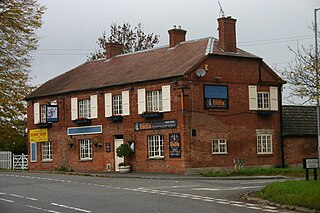
Elton on the Hill is a hamlet and civil parish in Nottinghamshire, England and within the Vale of Belvoir. A population of 114 was reported at the 2021 census.

Holy Trinity Church, Wysall is a parish church in the Church of England in Wysall.
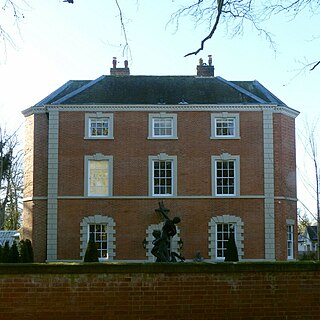
Normanton-on-the-Wolds is a small village and civil parish in Nottinghamshire, England. Population for the 2011 census was 245, increasing slightly to 251 residents at the 2021 census. The total area of the parish is 1.5 square miles.
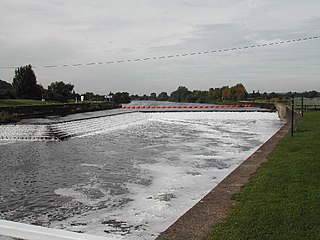
Fiskerton cum Morton is a civil parish in the Newark and Sherwood district, within the county of Nottinghamshire, England. The overall area had a population of 803 at the 2021 census. The parish lies in the south east of the county. It is 112 miles north of London, 12 miles north east of the city of Nottingham, 5 miles west of the town of Newark-on-Trent and 21⁄2 miles south east of the town of Southwell. The parish lies along the bank of the River Trent and is primarily a commuter residential area to both Nottingham and Newark.
Bilsthorpe Moor is a hamlet in the civil parish of Bilsthorpe, in the Newark and Sherwood district of Nottinghamshire, England. It is 120 miles north of London, 13 miles north east of the city of Nottingham, five miles south of Ollerton and close to the junction of the A614 and A617 roads.
Thoroton is a civil parish in the Rushcliffe district of Nottinghamshire, England. The parish contains five listed buildings that are recorded in the National Heritage List for England. Of these, one is listed at Grade I, the highest of the three grades, and the others are at Grade II, the lowest grade. Grades are designated by interest in preservation. The parish contains the village of Thoroton and the surrounding area. All the listed buildings are in the village, and consist of a church, a pigeoncote, a manor house, a house and a range of associated buildings.
Thorpe in the Glebe is a civil parish in the Rushcliffe district of Nottinghamshire, England. The parish contains four listed buildings that are recorded in the National Heritage List for England. All the listed buildings are designated at Grade II, the lowest of the three grades, which is applied to "buildings of national importance and special interest". There are no settlements in the parish, and the listed buildings consist of three farmhouses and a tomb.
Wysall is a civil parish in the Rushcliffe district of Nottinghamshire, England. The parish contains five listed buildings that are recorded in the National Heritage List for England. Of these, one is listed at Grade I, the highest of the three grades, and the others are at Grade II, the lowest grade. The parish contains the village of Wysall and the surrounding area. All the listed buildings are in the village, and they consist of a church, three farmhouses and a cottage.















